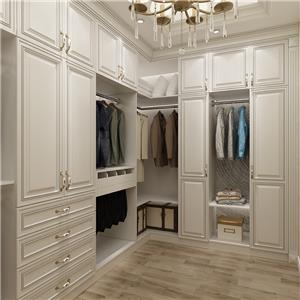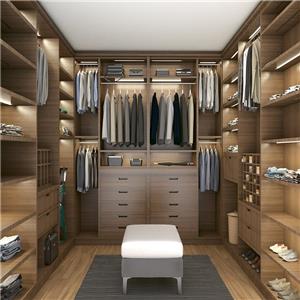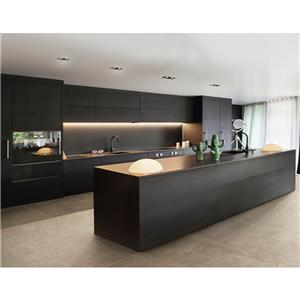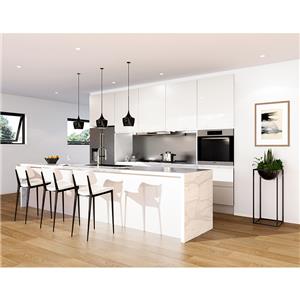How to Buy Kitchen Cabinets: A Comprehensive Guide
How to Buy Kitchen Cabinets: A Comprehensive Guide
Kitchen cabinets are one of the most important elements of any kitchen remodel or new construction. They provide storage, define the kitchen's style, and significantly impact functionality. However, buying kitchen cabinets can be overwhelming due to the variety of materials, styles, and price points available.
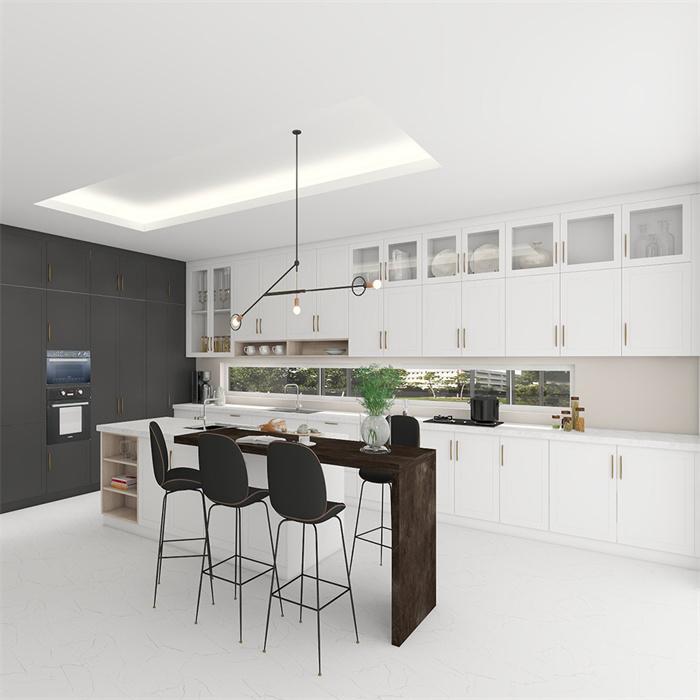
This guide will walk you through everything you need to know about buying kitchen cabinets, from planning and budgeting to installation and maintenance.
1. Assess Your Needs and Plan Your Layout
Before purchasing kitchen cabinets, you need to evaluate your needs and plan the layout.
A. Measure Your Kitchen
- Use a tape measure to record the dimensions of your kitchen.
- Note the locations of windows, doors, and appliances.
- Consider ceiling height, as it affects cabinet sizing.
B. Determine Your Storage Needs
- Do you need deep drawers for pots and pans?
- Would pull-out shelves or lazy Susans improve accessibility?
- How much pantry storage do you require?
C. Choose a Layout
Common kitchen layouts include:
- L-Shaped – Efficient for small to medium kitchens.
- U-Shaped – Offers maximum storage and counter space.
- Galley – Ideal for narrow kitchens with parallel counters.
- Island Layout – Adds extra storage and workspace.
2. Set a Budget
Kitchen cabinets can range from affordable stock options to high-end custom designs.
A. Types of Cabinets by Price
1. Stock Cabinets – Pre-made, mass-produced, and budget-friendly ($60–$200 per linear foot).
2. Semi-Custom Cabinets – Offer some customization ($150–$500 per linear foot).
3. Custom Cabinets – Fully tailored to your kitchen ($500–$1,500+ per linear foot).
B. Additional Costs to Consider
- Installation fees
- Hardware (handles, knobs, hinges)
- Countertops
- Delivery charges
3. Choose the Right Material
Kitchen cabinets come in various materials, each with pros and cons.
A. Wood Cabinets
- Pros: Durable, timeless, can be refinished.
- Cons: Expensive, may warp in humidity.
- Types: Oak, maple, cherry, birch.
B. MDF (Medium-Density Fiberboard)
- Pros: Affordable, smooth finish, resists warping.
- Cons: Not as durable as wood, can swell if wet.
C. Plywood Cabinets
- Pros: Strong, moisture-resistant, good for painted finishes.
- Cons: More expensive than MDF.
D. Thermofoil Cabinets
- Pros: Budget-friendly, easy to clean.
- Cons: Prone to peeling over time.
E. Metal Cabinets
- Pros: Modern look, durable, easy to clean.
- Cons: Can dent, limited style options.
4. Select a Cabinet Style and Finish
The style of your cabinets will define your kitchen's aesthetic.
A. Popular Cabinet Styles
- Shaker – Simple, clean lines (timeless and versatile).
- Raised Panel – Traditional, elegant design.
- Slab (Flat-Panel) – Modern, minimalist look.
- Beadboard – Rustic or cottage-style appeal.
B. Finish Options
- Painted – Offers a sleek, customizable look.
- Stained – Highlights wood grain for a natural appearance.
- Glazed – Adds depth and an antique effect.
- Distressed – Vintage, weathered look.
5. Consider Cabinet Door Types
The door style impacts both functionality and aesthetics.
A. Common Door Styles
- Overlay Doors (Full, Partial, Inset) – Affect how doors sit on the cabinet frame.
- Slab Doors – Flat, handle-less for a modern look.
- Glass-Front Doors – Display dishes but require organization.
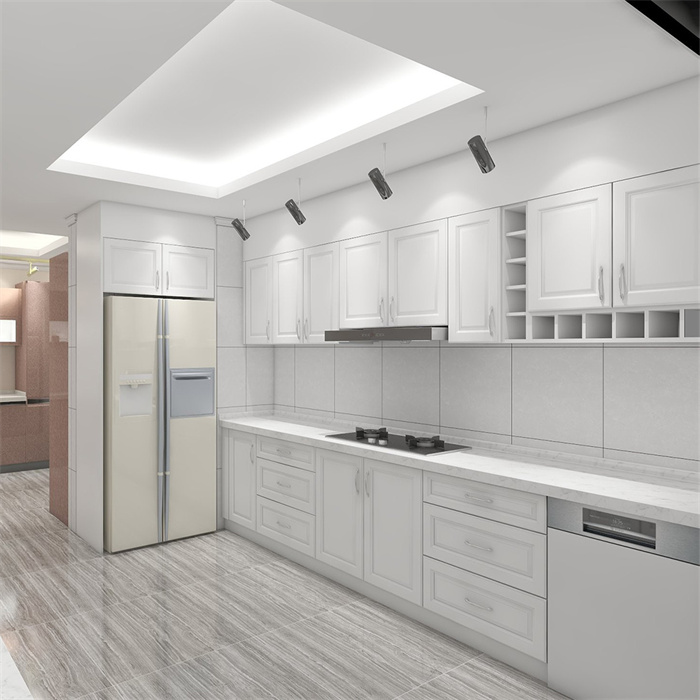
6. Choose Hardware and Accessories
Cabinet hardware and accessories enhance usability.
A. Hardware Options
- Knobs vs. Pulls – Knobs are classic; pulls offer better grip.
- Finishes – Matte black, brushed nickel, brass, chrome.
B. Functional Accessories
- Soft-close hinges
- Pull-out trash bins
- Spice racks
- Drawer dividers
7. Decide Between Ready-to-Assemble (RTA), Stock, or Custom Cabinets
A. Ready-to-Assemble (RTA) Cabinets
- Pros: Affordable, easy to ship, DIY-friendly.
- Cons: Requires assembly, limited customization.
B. Stock Cabinets
- Pros: Readily available, budget-friendly.
- Cons: Limited sizes and styles.
C. Custom Cabinets
- Pros: Perfect fit, high-end materials.
- Cons: Expensive, longer lead time.
8. Where to Buy Kitchen Cabinets
A. Big-Box Retailers (Home Depot, Lowe’s, IKEA)
- Offer stock and semi-custom options.
- Affordable but may lack uniqueness.
B. Specialty Cabinet Stores
- Higher-quality materials and customization.
- More expensive but better craftsmanship.
C. Online Retailers
- Convenient but requires careful measurement.
- Check reviews and return policies.
D. Local Cabinet Makers
- Best for custom designs.
- Supports local businesses.
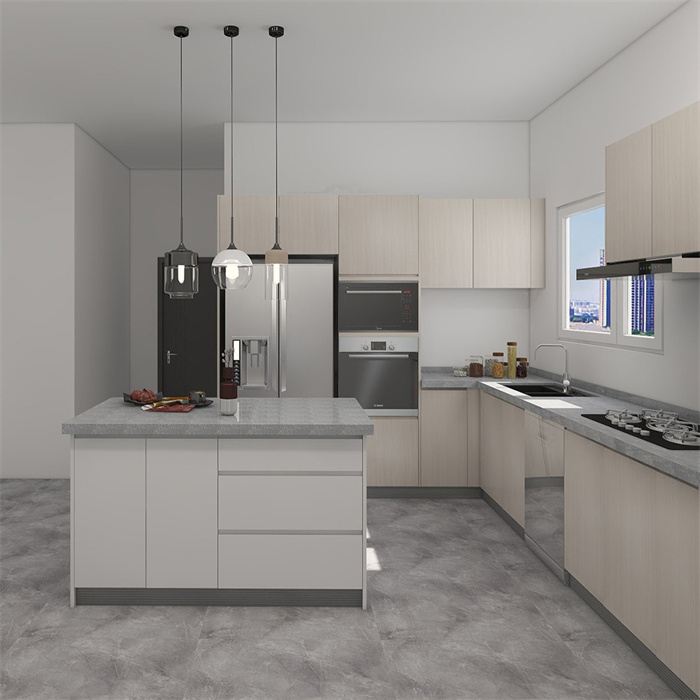
9. Installation: DIY vs. Professional
A. DIY Installation
- Pros: Saves money, rewarding.
- Cons: Time-consuming, risk of errors.
B. Hiring a Professional
- Pros: Ensures proper fit and alignment.
- Cons: Adds to the cost.
10. Maintenance and Care Tips
- Clean with mild soap and water.
- Avoid harsh chemicals that damage finishes.
- Tighten loose hinges and handles periodically.
Final Thoughts
Buying kitchen cabinets requires careful planning, budgeting, and research. By considering your needs, material options, and installation preferences, you can find the perfect cabinets for your kitchen.
Would you like recommendations for specific brands or further details on any section? Let me know how I can refine this guide for better Google ranking!

